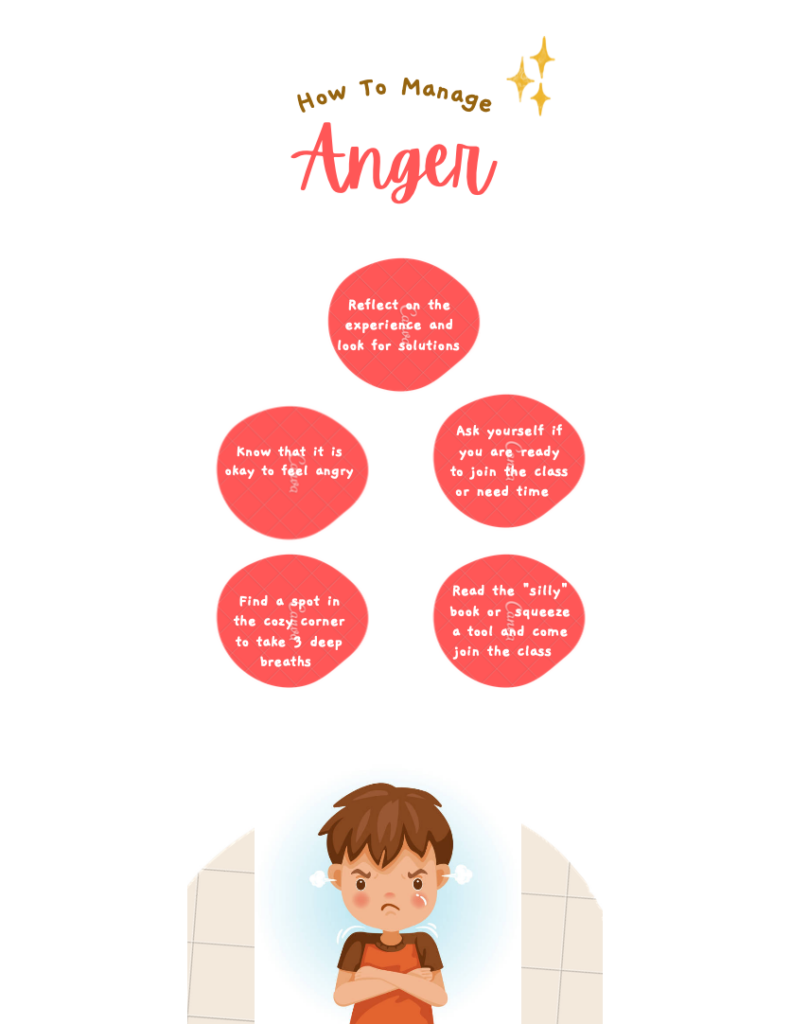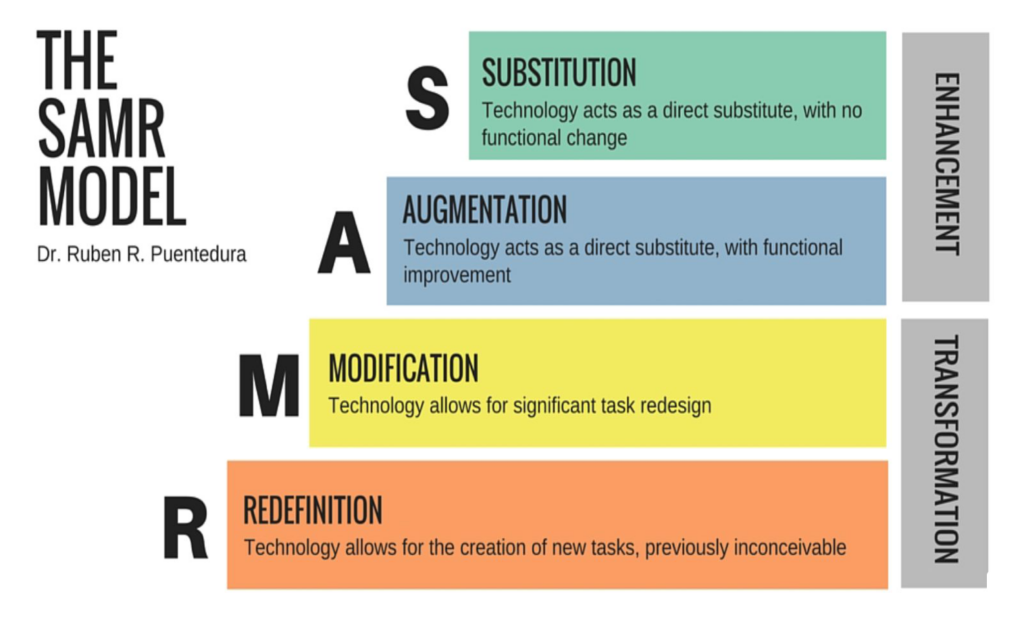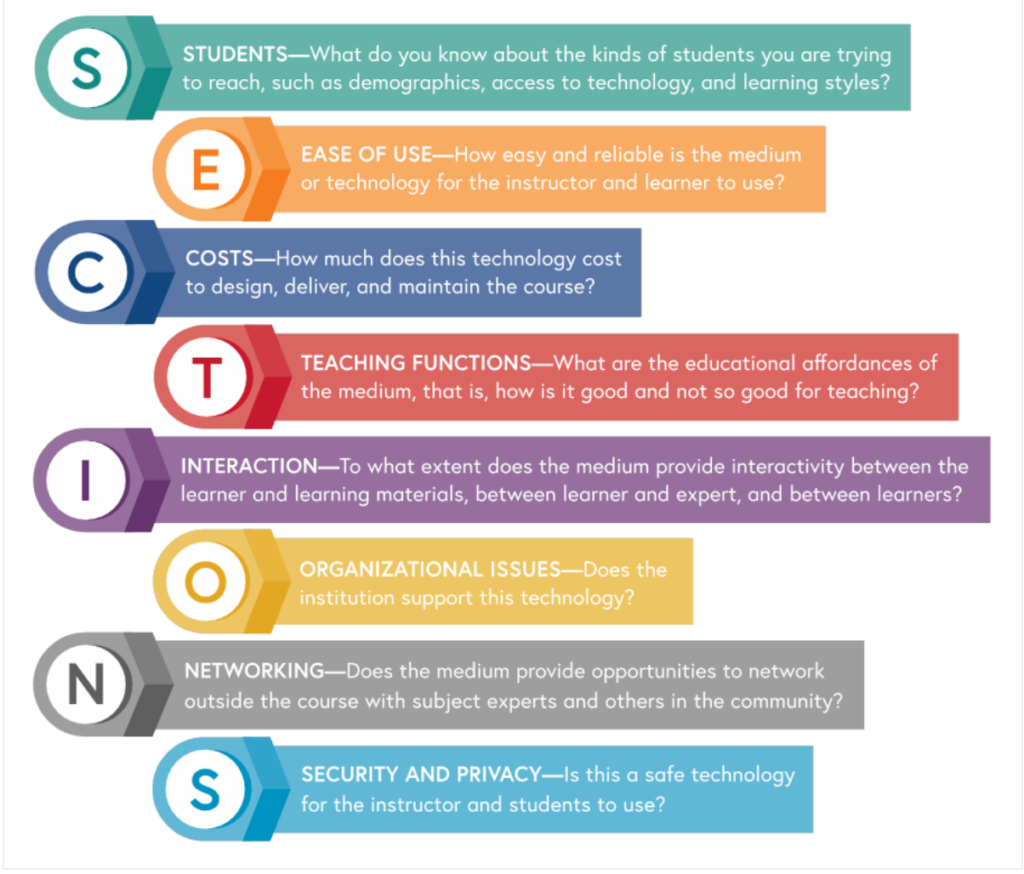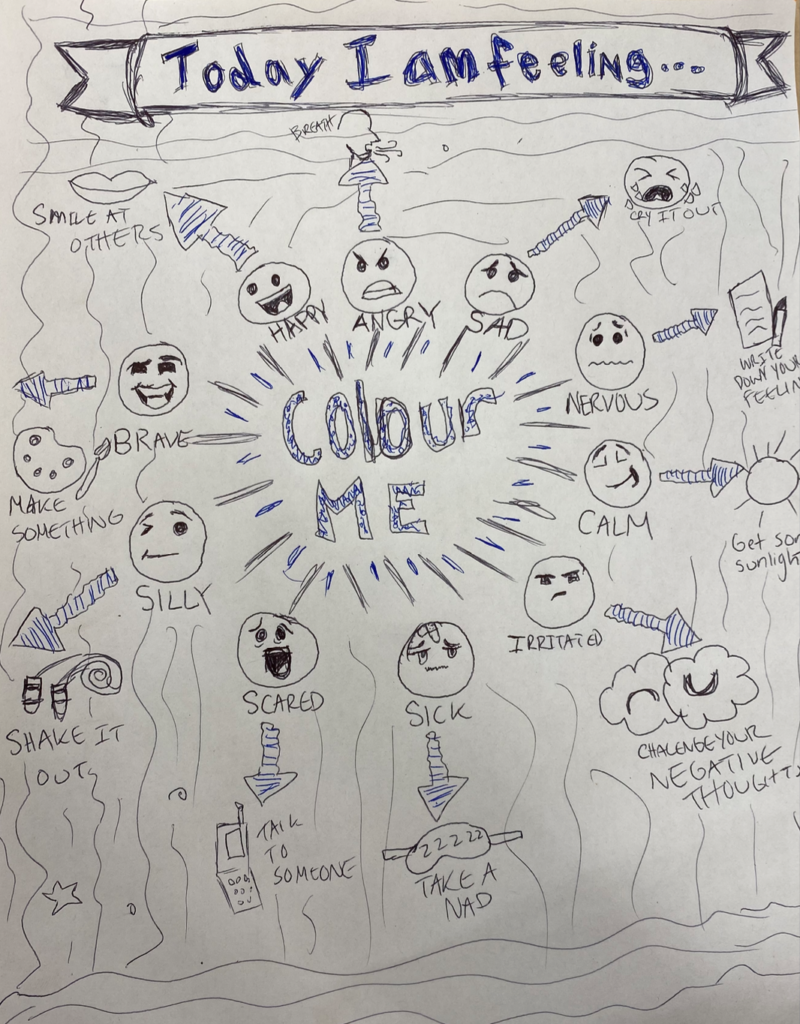This week I really tested myself and learned two new ways to creativity convey information. Although learning how to make an infographic on Canva and attempting to create a sketch note may not seem that advanced, for this low-tech queen it sure was…. These activities seemed like a perfect time to create two resources for my free inquiry which would not only be aesthetically pleasing but show off my newly acquired tech skills. Behold my emotional regulation cart on feeling “angry” for my cozy corner.

Now that I’ve bragged about how creative and awesome I am, it’s time to discuss the actual pressing materials that we covered this week.
SAMR Theory
The SAMR theory of technology can broadly be understood as a tool to evaluate how teachers can incorporate technology in their classroom. In this model there are several levels like a ladder that include: substitution, augmentation, modification, and redefinition. See the infographic below for concrete definitions.

This model will be somewhat useful when evaluating the technology I want to incorporate in an early primary teacher and extremely useful for intermediate and middle school. Prior to learning about the SAMR Model, I thought that any incorporation of technology in the class would augment the learning. However, I quickly realized that the only experience I have had with incorporating technology would be substitution. That is not to say that substitution is not helpful, but that educators should be looking to move from enhancement to transformation. In a grade 3 classroom this could look like changing a writing activity to iMovie that can be shared and merged into one big classroom project. As I move along in my practice, I will be more aware of the SAMR model and how it can be used to evaluate technology in my classroom.
SECTIONS Model
The SECTIONS model provides a framework for “evaluating the appropriateness of educational technologies for any given learning environment” (Bates, T. 2015, Youtube). See infographic below for a refresher.

The intent of the sections model is to support educators who want to integrate technology into their practice. Thus, it would be an appropriate tool to help me select which technologies would not only help meet my learning objectives but also ensure that the school I am working in has the resources to support this learning. For instance, take the section “students” where educators need to be aware of access to technology their school has and the students ability levels with typing, before say planning a lesson that requires 20 laptops.
Sketchnoting
Sketchnoting can be simply understood as the process of creating visual notes that have a mix of drawings, handwriting, and hand-drawn elements. The effectiveness of using sketch note to remember new information and connected ideas instead of simply handwriting has been documented in this youtube video.
Would sketchnoting be useful for early primary student?
ABSOLUTELY!!! I think early primary is the ideal time to be teaching children how to sketch note. Not only do children love to doodle and draw, but by engaging in sketchnoting students can:
- tap into visual language
- engage their whole mind
- help them remember new information.
It is also extremely accessible to students, since it only requires paper and a writing tool. How I would use sketch noting in my classroom would be by having a daily journal for my students. Each day they will have 20 minutes to document new learnings in their journal. It can include visuals, doodles, and written work. Here is a sketch note I created for my free inquiry on checking in with their bodies/feelings.

dayna
February 15, 2022 — 9:12 am
Hey Jade, great post! Love your use of multiple forms of media! If I were you, I would also be bragging about how creative and awesome I am! I think your info-graphic about managing anger was so great! I might have to ‘borrow’ it for my future classrooms!! 😉 Looking forward to more great posts!
Cheers,
Day
alee
February 16, 2022 — 9:40 am
Hi Jade,
I love your idea of having the students take 20 minutes to document their learning that happened throughout the day with sketchnoting in their journals! I totally agree that sketchnoting is extremely accessible for all students – especially students that struggle with writing words/letters! Also, I love the sketchnote you did in class. It’s such a great way to do a quick check-in with students!
-A